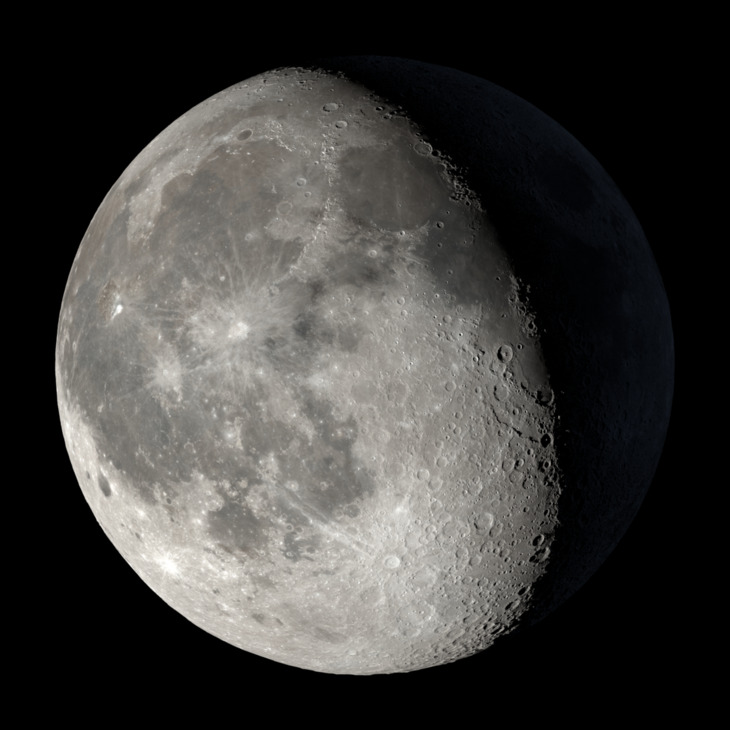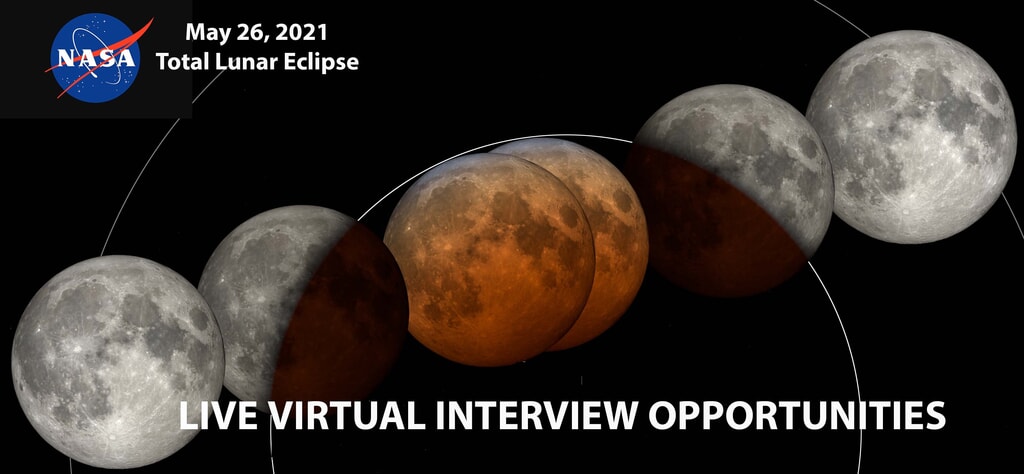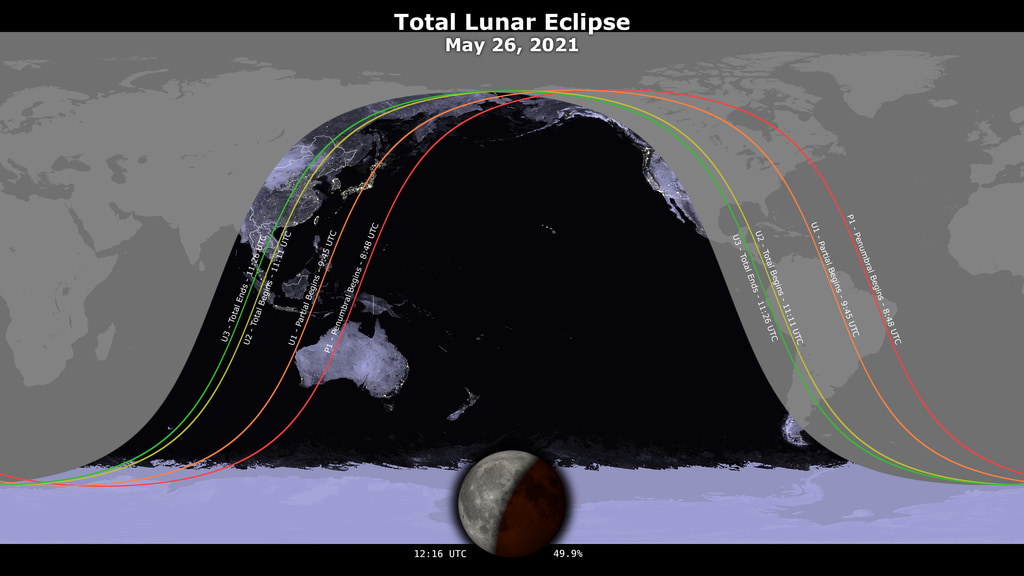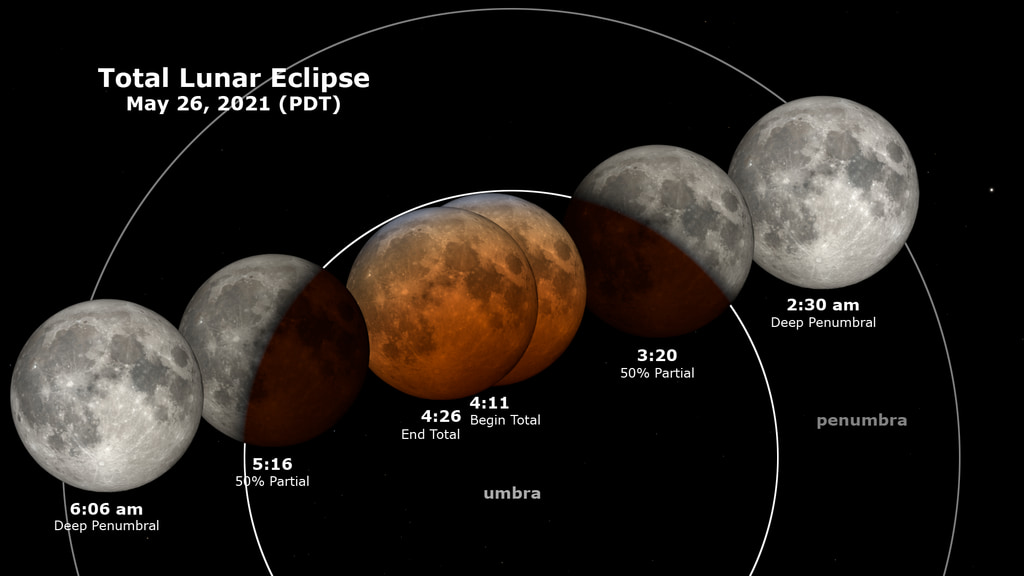May 26, 2021 Total Lunar Eclipse: Telescopic View
The total lunar eclipse of May 26, 2021 is the first in nearly two and a half years. It occurs within hours of the closest perigee of the year, making the Moon appear about 7% larger than average. The total phase will be visible near moonset in the western United States and Canada, all of Mexico, most of Central America and Equador, western Peru, and southern Chile and Argentina. Totality occurs just after moonrise along the Asian Pacific Rim. The eclipse can be seen in its entirety in eastern Australia, New Zealand, and the Pacific Islands, including Hawaii.
The obscuration percentage in the table is the fraction of the Moon covered by the Earth's umbra, the part of its shadow in which the Sun is completely blocked. The part of the shadow in which the Sun is only partially blocked is called the penumbra.
The animations on this page run from 8:30:00 to 13:59:50 UTC, which is also the valid range of times for this Dial-a-Moon. The exposure setting of the virtual camera changes around totality in order to capture the wide dynamic range of the eclipse. The parts of the Moon outside the umbra during the partial phases are almost as bright as an ordinary full moon, making the obstructed parts appear nearly black. But during totality, our eyes adjust and reveal a range of hues painted on the Moon by all of Earth's sunrises and sunsets.
All phases of a lunar eclipse are safe to view, both with your naked eye and an unfiltered telescope.
The appearance of the Moon during the lunar eclipse at 10 seconds per frame. Includes text highlighting the contact times and various eclipse statistics.
The appearance of the Moon during the lunar eclipse at 10 seconds per frame. The Download menu includes links to frames with alpha in both TIFF and EXR formats.
Credits
Please give credit for this item to:
NASA's Scientific Visualization Studio
-
Visualizer
- Ernie Wright (USRA)
-
Producer
- David Ladd (USRA)
-
Scientist
- Noah Petro (NASA/GSFC)
-
Technical support
- Laurence Schuler (ADNET Systems, Inc.)
- Ian Jones (ADNET Systems, Inc.)
Release date
This page was originally published on Monday, April 26, 2021.
This page was last updated on Thursday, January 30, 2025 at 2:45 PM EST.
Missions
This page is related to the following missions:Series
This page can be found in the following series:Datasets used
-
DEM (Digital Elevation Map) [LRO: LOLA]
ID: 653 -
DE421 (JPL DE421)
ID: 752Planetary ephemerides
This dataset can be found at: http://ssd.jpl.nasa.gov/?ephemerides#planets
See all pages that use this dataset -
LROC WAC Color Mosaic (Natural Color Hapke Normalized WAC Mosaic) [Lunar Reconnaissance Orbiter: LRO Camera]
ID: 1015This natural-color global mosaic is based on the 'Hapke normalized' mosaic from LRO's wide-angle camera. The data has been gamma corrected, white balanced, and range adjusted to more closely match human vision.
See all pages that use this dataset
Note: While we identify the data sets used on this page, we do not store any further details, nor the data sets themselves on our site.




